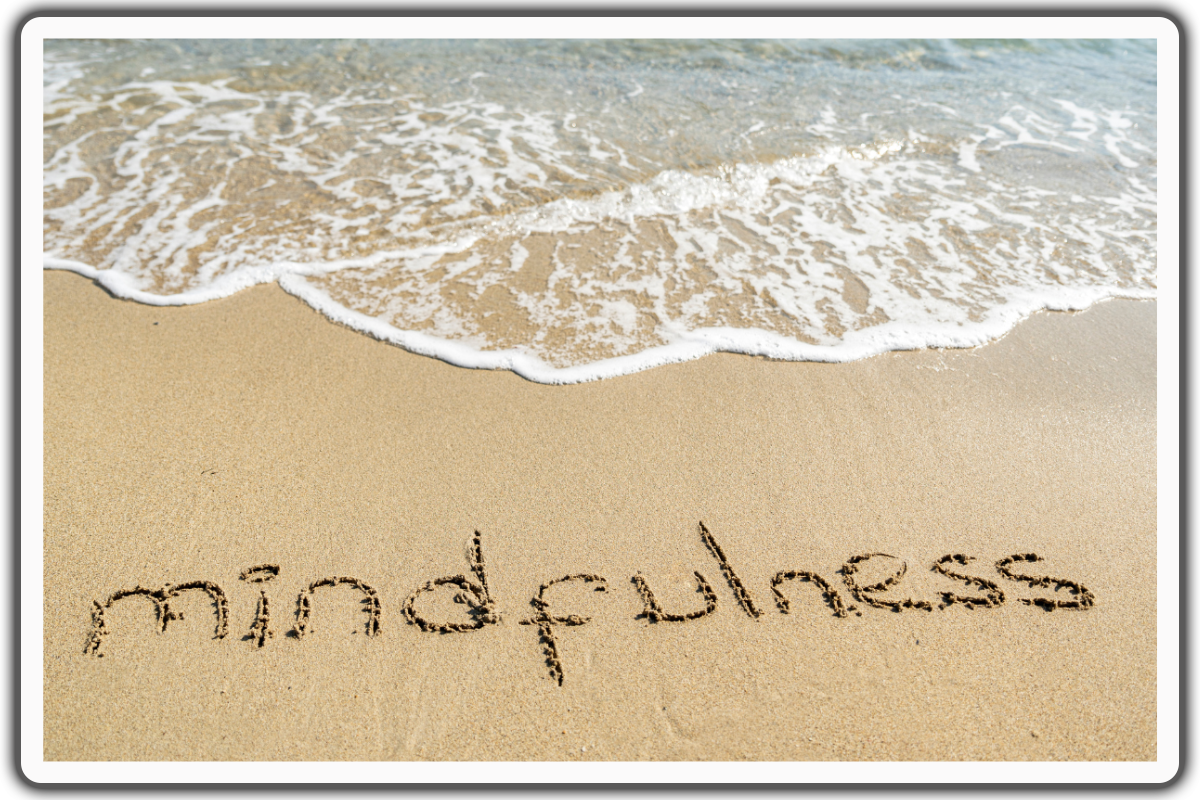
Embracing the Present: 10 Mindful Practices For Inner Peace And Clarity
Discover the transformative power of mindfulness habits with our practical guide. Cultivate a calmer mind and a more balanced life through simple yet effective mindfulness practices. Start your journey to greater well-being today.
According to Psychology, being fully present in our own inner thoughts and feelings is a powerful method to create an environment where our full cognitive potential can flourish. This concept is adopted by Jon Kabat-Zinn, an American Professor who proposed the Mindfulness-Based Stress Reduction (MBSR).
In his approach, individuals are taught to sustain their attention on every action, thought, and element of their surroundings that they incorporate. This way, individuals can also allow room to process emotions before action, leading to better decision making in everyday life.
Benefits Of Practicing Mindfulness habits

Improves Psychological State
Practicing mindfulness habits is more than just for focus and attention, it is also linked to improving psychological state. By paying attention to inner thoughts and feelings, and individual creates a more self-accepting environment where vulnerability to stress, anxiety and also depression can thrive.
Moreover, mindfulness habits results in congruence in thoughts and action, leading to better self-concept. Mindfulness habits also fosters present-moment awareness and mental clarity, enabling individuals to make more deliberate and astute decisions that align with their goals and values.
Pain Relief
The practice of mindfulness habits can also contribute to pain relief. Mindfulness habits can indeed make pain and anxiety feel less intense. This means that people who practice mindfulness habits might be better at handling pain and its emotional effects compared to those who don't practice mindfulness habits.
Foster Creativity

Moreover, it also fosters a person's creativity. By connecting to one's own inner world, it eases the access to imagination therefore generating ideas for innovation. Having access to one's own potential also results in a feeling of self-sufficiency and self-compassion. Thus, boosting one's self-esteem and confidence.
Emotional Regulation
Mindfulness habits also helps individuals become more aware of their emotions without being overwhelmed by them. This awareness can also lead to better emotional regulation and more appropriate responses to challenging situations.
Behavioral Development
Furthermore, studies have found that engaging in mindfulness habits practices is associated with the behavioral aspect of a person. Through improved positive thinking, an individual is less likely to engage in deviant behaviors including racism, discrimination, and also other bias behaviors.
This newfound mental clarity and emotional equilibrium create an environment where individuals can also fully immerse themselves in the richness of their experiences, fostering a sense of contentment and fulfillment in daily life.
10 Ways To Practice Mindfulness Habits
The benefits of regular mindfulness habits practice goes on and on. The heightened awareness it develops grants people the capacity to engage with life more authentically, and also to savor even the simple joys.
Hence, here are 10 ways to start practicing mindfulness habits:
1. Stay Centered
This may not be something you can do every day. But it’s an excellent way to wake up mindfully from time to time. Pick a day when you don’t need to wake up at a particular time, perhaps one of your days off. Then, the night before, when you’re ready for bed, purposely remove any gadgets from your bedroom ― your alarm clock, cell phone, pedometer, watch, laptop, tablet, and so on. This will indeed allow you to have full attention to your body and to stay self-connected.
Complete all of your nightly tasks and get into bed. If the weather permits, open up a window in the bedroom so that the sounds of nature can enter into your resting time. Also, use the quiet space to self-reflect and introspect.
Moreover, allow yourself to fall asleep and awaken in the morning without any technological devices, gadgets or other interferences. As the sun brightens in the morning and fills your room, your body will be gently notified of daybreak. This will be the beginning of a very mindful morning.
2. Mindful Shower
It’s easy to view showering as a utilitarian activity necessary to stay clean and odor-free. You can, however, use your daily shower as a mindful practice.
Make an effort to use all of your senses as you clean yourself. In the shower, use your sense of touch to feel the way your body reacts to the temperature change as the water hits your skin. So, start at your head and mentally scan each portion of your body as the water washes over you.
Using your sense of sight, look around and notice the water droplets that have formed on the shower walls and the moisture that has built up around you. Then, look at your beautiful skin and hair. Try to appreciate the appearance of your body positively.
Afterward, listen to the sounds of the water rushing out of the showerhead and falling to the shower floor. Taste the clean water on your lips as you wash your face. Then, enjoy the scent of your soap and shampoo as you use each product.
As you finish your shower and turn off the water, stand for a moment and take a few deep, slow breaths out in the humid air. When you dry yourself, pay attention to the way the towel feels against your skin.
3. Mindful Eating
Often, we eat without really thinking about the food we put in our bodies. We’ll notice if something tastes good or bad. However, many times our minds are consumed with other thoughts while we fuel ourselves. Make your meals opportunities to be mindful. In eating, there are a multitude of ways to practice mindfulness habits.
One way to be more in tune with the foods we eat is to dwell on the source. As you enjoy the visual impact of your meal, consider the farmer who planted seeds for fruits and vegetables to grow and also the harvesters who came and collected it.
If you’re eating meat, view all of the work that went into raising and caring for the animals that have been used to make your meal. Also, take into account the hands that have prepared your actual meal as well and thank them if it’s possible.
As you consume your meal, think about the initial flavors that hit your palate first. Then, feel the texture of each element of the dish and take in the aroma of your meal. Afterward, eat slowly and try to taste and savor each morsel of food. Also, consider the way each item you’ve eaten makes your body feel and keep track of your level of fullness. Finally, incorporating mindful eating in your daily routine will provide you with extended health benefits.
4. Clean Up Consciously

Enjoy the comfort of your home as you clean and do chores. You may listen to your favorite music or turn on a podcast. Practice mindful listening and create interaction between the lyrics and yourself. This will also allow you to enjoy the process and feel calmer as you engage in your chores.
When you’re folding clothes, focus on the rhythm of your breath. Enjoy the physical sensations as you fold fabrics and appreciate the texture of your clothing. As you wash dishes, let yourself also enjoy the warmth of the soapy water on your hands and the softness of the bubbles. When you’re organizing your books, bills and collective piles of things left behind, do your best to appreciate the items and also handle them with care.
Melissa Eisler, the creator of Mindful Minutes, wrote, “Whether cleaning or decluttering, the main message here is to look for the beauty and wonder ― in each and every step, each and every item and each and every moment. Instead of focusing on the leftover Thai food that you’re having trouble scraping off of your plate or the lack of time you have to tackle the task of sweeping, focus on the pleasant scent of the lavender dish soap or the warm temperature of the water.”
5. Walking Meditation
It’s amazing just how the simple act of walking outdoors can bring you more awareness and heighten your senses. Take a mindfulness stroll through your office parking lot, your neighborhood or a wooded area. Notice the feeling of the outside air on your skin. Is it windy or still? Listen for the sounds around you and breathe deeply, taking in the fragrance of nature.
While you’re out, be sure to touch something on the Earth or in nature. Feel the bark of a tree or the jagged edge of a stone. If your environment allows, remove your shoes and experience the sensation of your bare feet against the ground. You may also conduct your breathing exercises or guided meditation in a serene place along with nature, giving you more oxygen to breath.
This allows a person to practice gratitude towards the surroundings and gain a positive impact on mood and perspective on life.
6. Create Art
Even if art isn’t typically your thing, it can be a fantastic, mindful activity. Use your self-connection to foster creative thinking. Just take a plain piece of paper and a pencil or pen and draw something you see ― a chair, piece of fruit, the view out of your window. Consider drawing a picture of yourself from a photograph.
You can also use other forms of art for mindfulness habits. Create a collage with pictures from magazines. Focus on your inside feelings and represent them on paper. Use clay to sculpt something that represents you. This will encourage you to conduct a gentle body scan, bringing you centered to yourself at the given moment.
7. Mindfulness Habits Journal

Find a quiet place, sit in a relaxed posture and write about your feelings at the present moment, your day, or, your surroundings . Just put pen to paper and start writing. You’ll see that writing can help you identify certain feelings you didn’t even know you were having.
Consider writing after you’ve taken a mindful walk or participated in another mindful activity. You could also pick something very small to write about, such as the wind blowing through the trees or a group of ants fighting over a crumb of food.
It may help you to set a timer for 10 minutes and commit to writing for that entire period or beyond. At the end of your session, your mind will feel lighter, and you’ll be more in touch with your inner self. Reading back what you’ve composed is also an enlightening and mindful practice.
8. Engage in Mindfulness Habits Exercises

Engaging in mindfulness habits exercises involves intentionally focusing one's attention on the present moment, without judgment. These exercises can take various forms, such as mindful breathing body scan, or guided meditations. You may also do this by simply placing a yoga mat in a quiet space, sit in a relaxed position and stay focused on your slow breathing.
By paying attention and immersing oneself fully in the current experience and observing thoughts, sensations, and emotions as they arise, individuals cultivate a heightened awareness and a sense of presence. Through regular practice, exercising with mindfulness habits can help reduce stress, enhance emotional regulation, and foster a deeper connection with oneself and the surrounding world, ultimately promoting overall well-being and mental clarity.
9. Consider Fasting
Most often, when we think of fasting, we think of giving up food for a period of time. However, fasting can be done in different forms. A person can fast desserts, give up coffee or tea, abstain from television or online shopping for a period of time.
Aside from all of its physical and spiritual benefits, fasting is also excellent for greater mindfulness habits. When you eliminate a daily and habitual activity or something that generally soothes you, it makes room in your countenance for more self-awareness and clarity.
Consider giving up something important to you for a week. Perhaps you enjoy green tea every morning. Give it up. Each time you long for that hot cup of tea, use it as an opportunity to be present and more mindful in the moment.
The heightened awareness in which fasting results can extend to other aspects of daily life as well, as individuals learn to recognize and respond to various internal cues and triggers.
10. Practice Meditation
Meditation, in any form, can help you come into a more mindful state. Mantra meditation is a very effective mindfulness habits exercise. Mantra meditation is a type of meditation practice that involves the repetition of a specific word, phrase, or sound, known as mantra.
Mantras can be syllables, words, or even longer phrases that hold spiritual or symbolic significance. The repetition of the mantra is used as a focal point to quiet the mind, cultivate concentration, and promote a sense of inner calm and mindfulness habits.
Similarly, Christian meditation or centering prayer can help you clear out anxious thoughts and enter into a greater sense of awareness. Christian meditation often emphasizes virtues such as humility, gratitude, compassion, and forgiveness. By contemplating and embodying these virtues, individuals cultivate a mindful and virtuous way of living.
Give yourself about 20 minutes of solitude, deep breaths and silence in mindfulness habits meditation to become more mindful.
Practice mindfulness habits. Psychologist Tara Brach says, "The only way to live is by accepting each minute as an unrepeatable miracle."
Meditation practice can help you clear up your mind and focus on tasks. Thus, reducing your stress and the risks of brain fog. Brain fog can leave you feeling forgetful, spacey and out of it. For your guide to improve your brain health, check out 14-Day Brain Health Quick Start Program, here!
Practice Mindful Breathing Exercise

A mindful breathing exercise is a practice that involves focusing your attention on your breath to cultivate present-moment awareness, reduce stress, and promote relaxation. It is a fundamental technique in mindfulness and meditation that helps anchor your attention and create a sense of calm.
Here's a basic mindful breathing exercise you can try:
- Find a Comfortable Position: Sit or lie down in a comfortable position. You can close your eyes or keep them slightly open, whichever feels more natural to you.
Focus on Your Breathing: Begin to focus your attention on your breath. Notice the sensation of your breath as you inhale and exhale. Feel the rise and fall of your chest or the expansion and contraction of your abdomen.
Breathe Naturally: Allow your breath to flow naturally, without trying to control or change it. Simply observe the rhythm of your breathing.
Counting Breaths: As you continue to breathe, you can add a counting element to the practice. Inhale slowly and deeply, then exhale fully. Count "one" as you complete the exhale. Inhale again and count "two" on the next exhale. Continue this pattern, counting up to ten breaths.
Start Over: Once you reach ten, start the counting over from one. If your mind becomes distracted or you lose count, gently bring your focus back to your breath and begin counting again from one.
Non-Judgmental Observation: As you practice, you may notice thoughts, sensations, or emotions arising. Instead of getting caught up in these distractions, simply acknowledge them without judgement and gently guide your attention back to your breath and counting.
Set a Timer: If you prefer, you can set a timer for a a specific durations, such as 5 or 10 minutes, to guide your practice. When the limiter goes off, take a few deep breaths and gradually transition back to your regular activities.
Conclusion
Practicing mindfulness allows individuals to break free from the cycle of automatic reactions and rumination, fostering a sense of ownership over their thoughts and actions.
Mindfulness practices also improves utilization of executive control in daily lives. As a result, stress and anxiety levels may decrease, and mental clarity and focus can improve. Mindfulness practice can enhance emotional intelligence, promoting healthier relationships and improved communication.
Incorporating mindful practices can lead to a greater sense of contentment and more gratitude and appreciation for life's simple pleasures. By fully immersing themselves in each moment, individuals can savor experiences more deeply and find joy in the present moment, rather than constantly seeking satisfaction in the future.
Consistency is key in reaping the benefits of mindfulness. Regular practice creates a positive feedback loop, reinforcing the habit of being present and enhancing its effects over time. As individuals continue to integrate mindfulness into their daily routines, they discover a transformative journey of self-discovery, personal growth, and a more balanced and fulfilling life.
